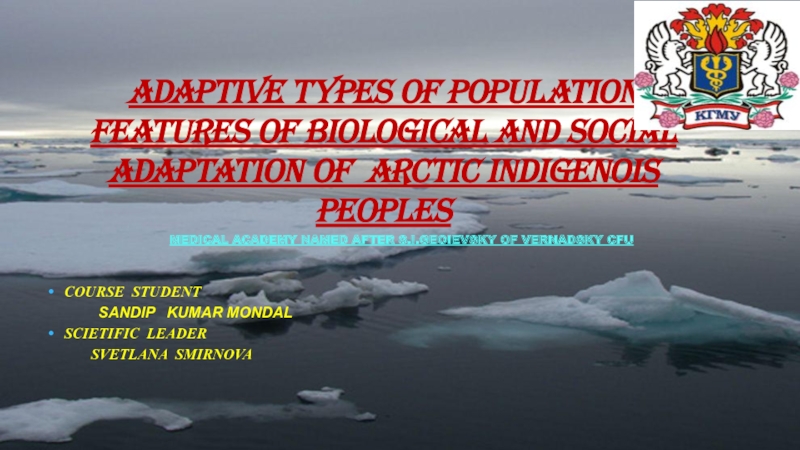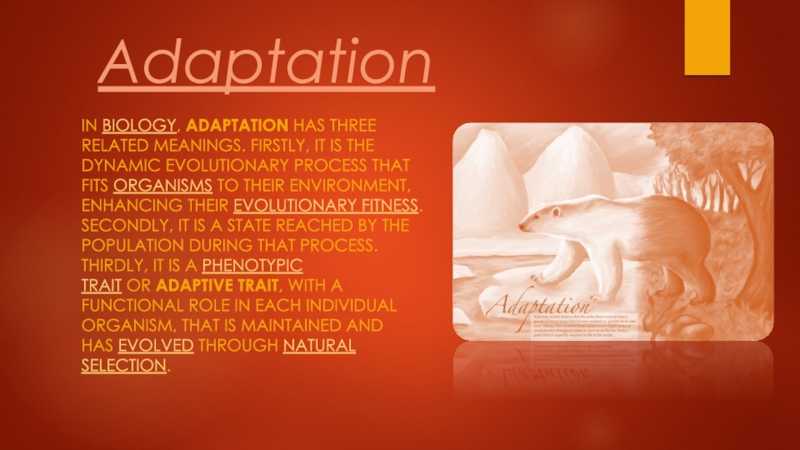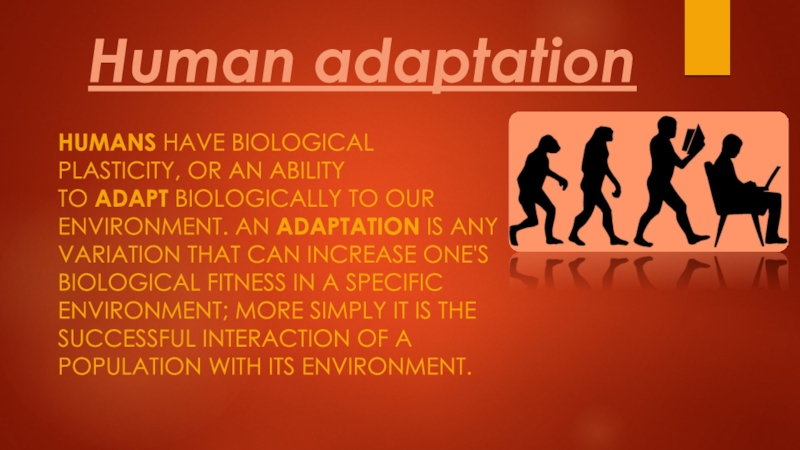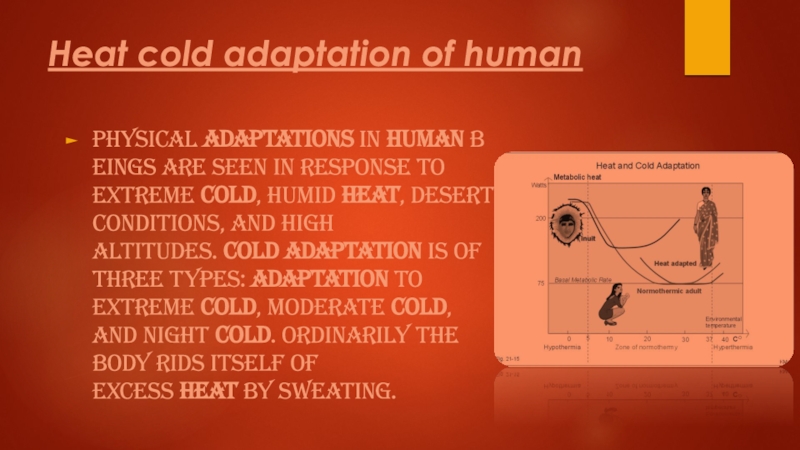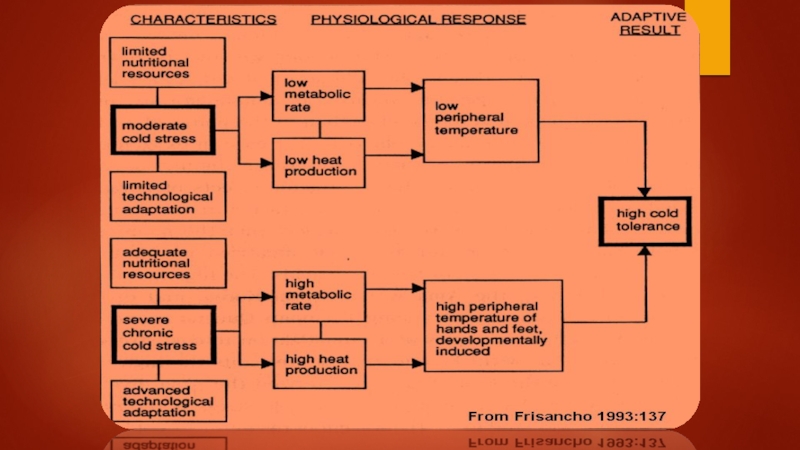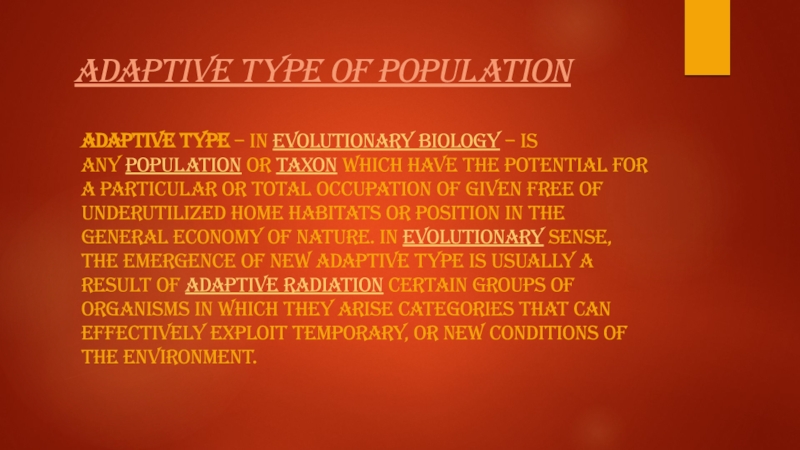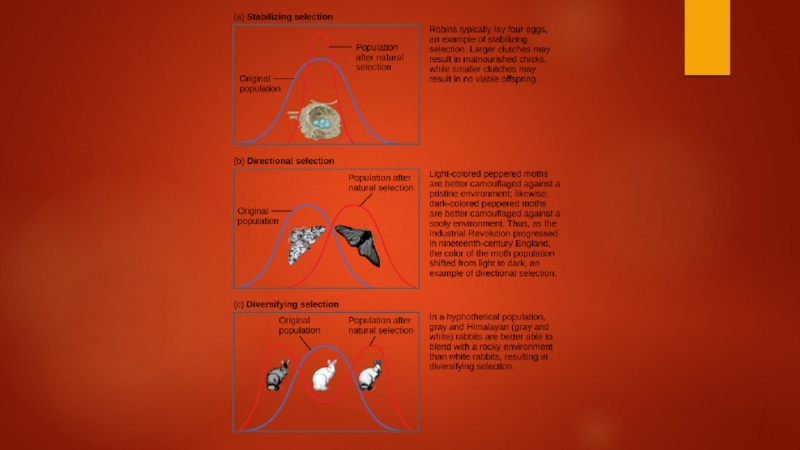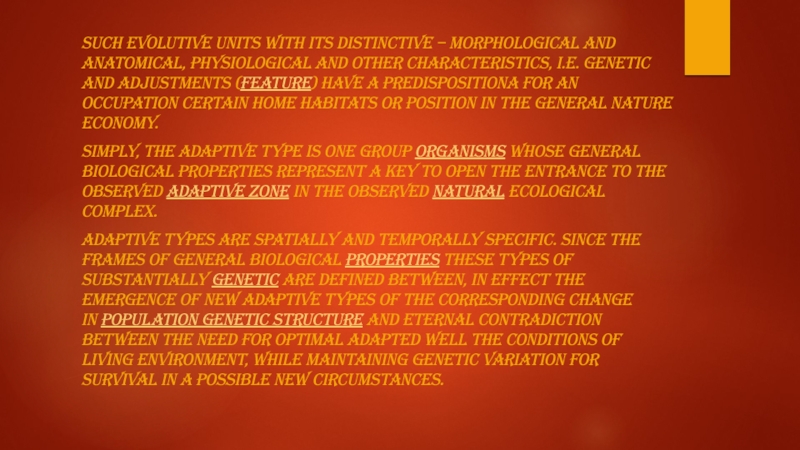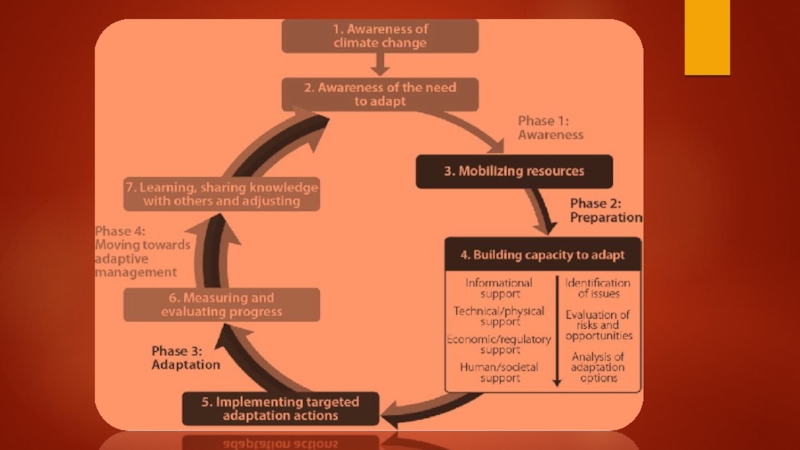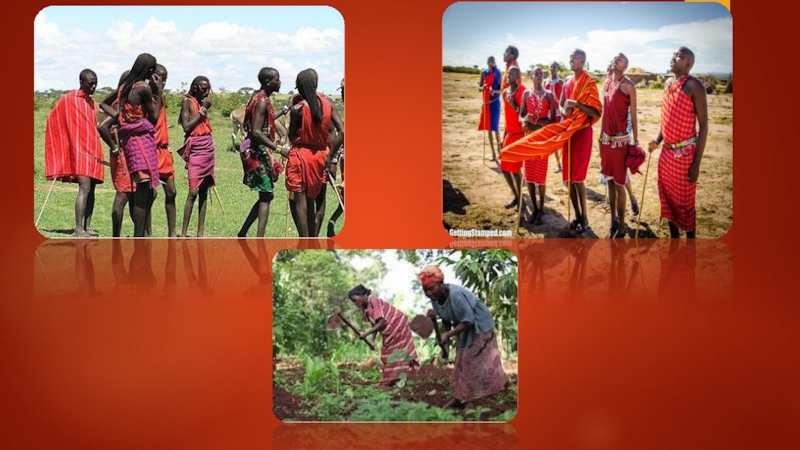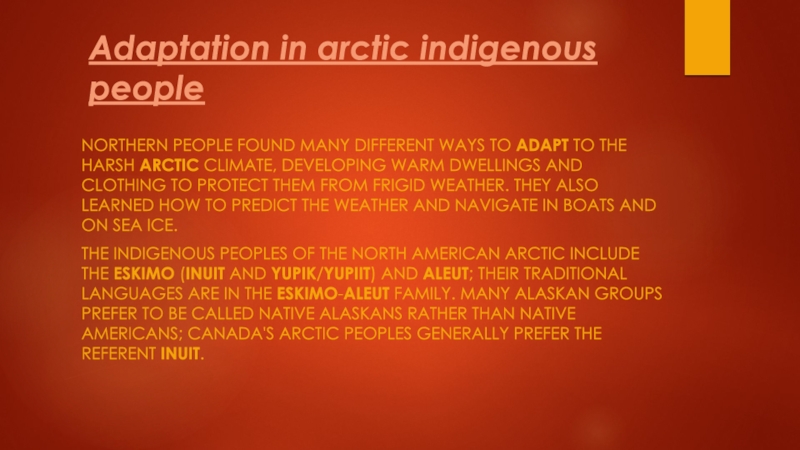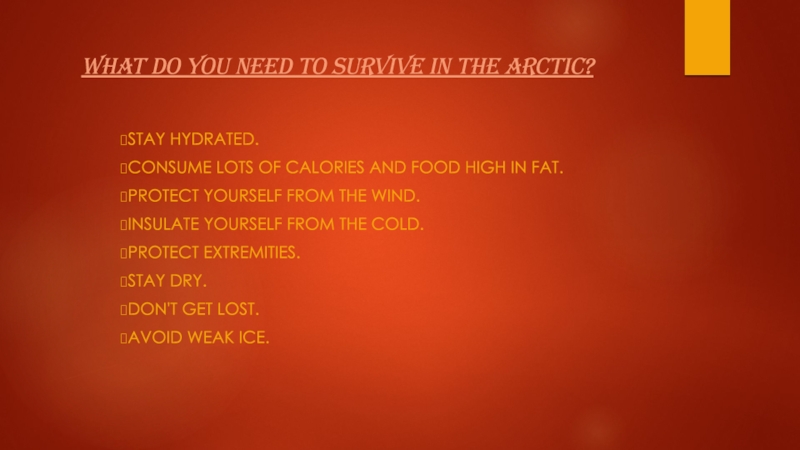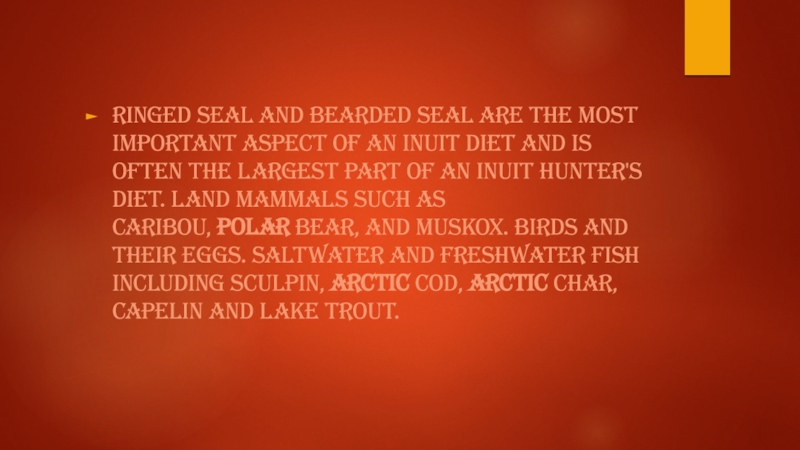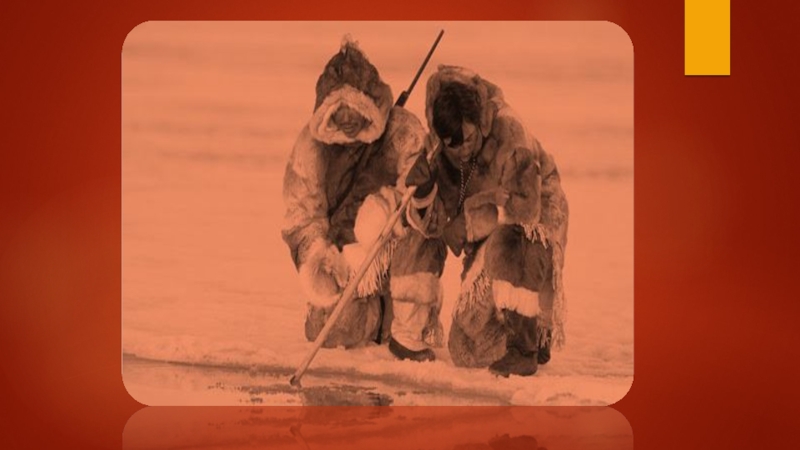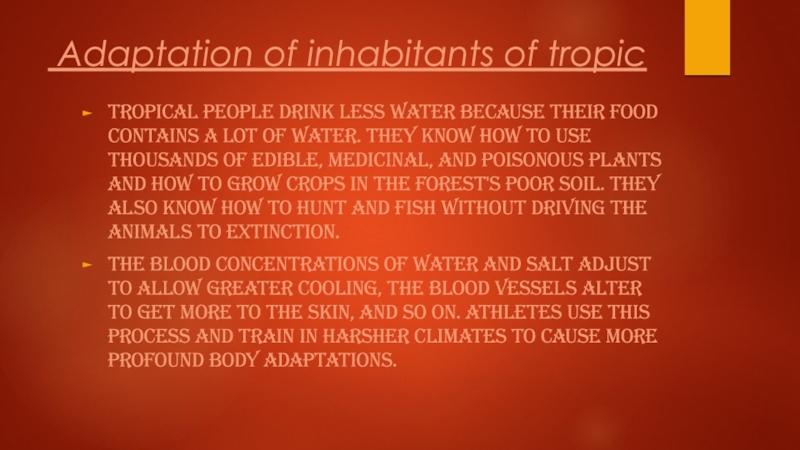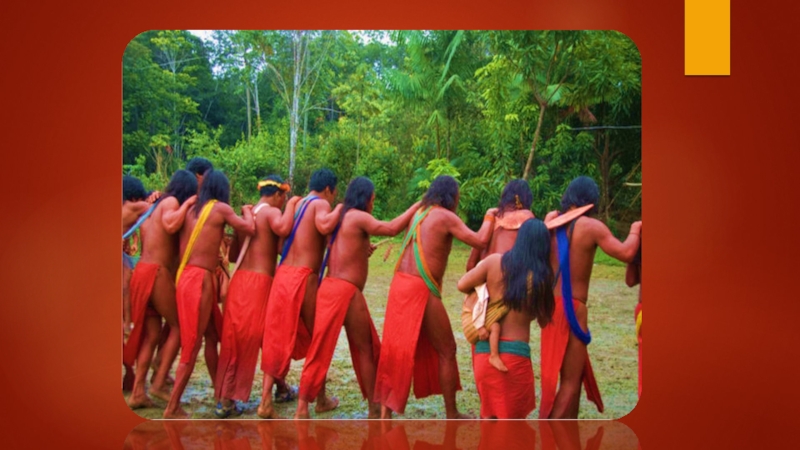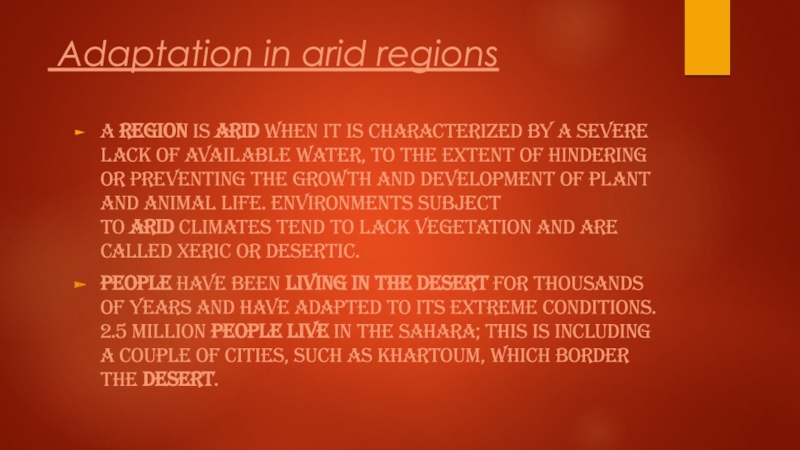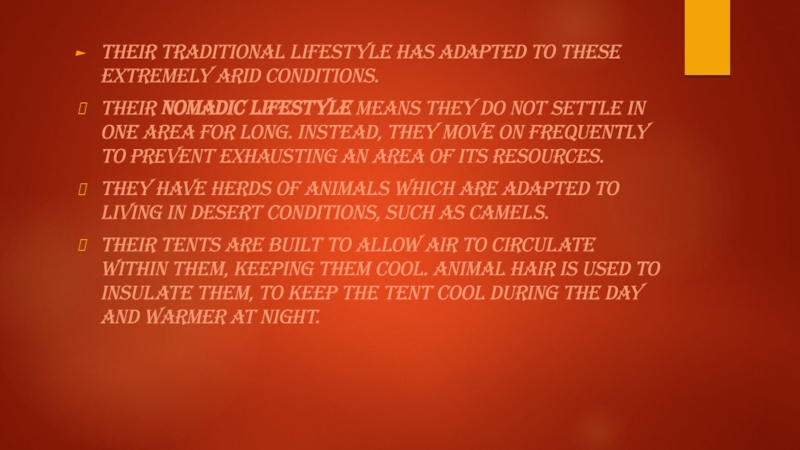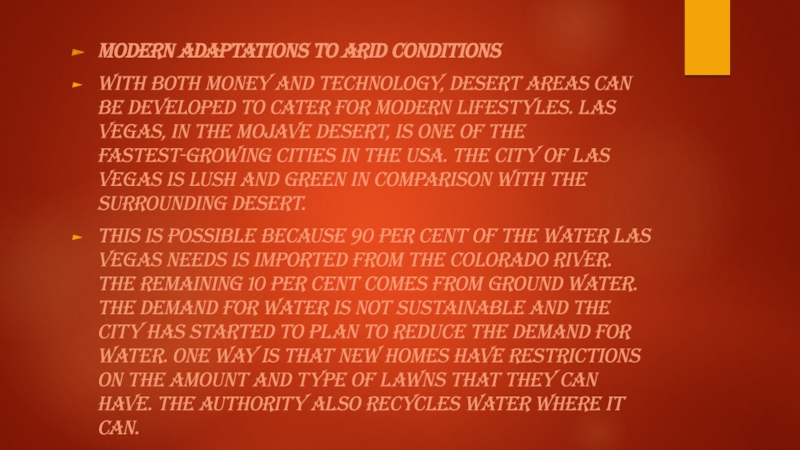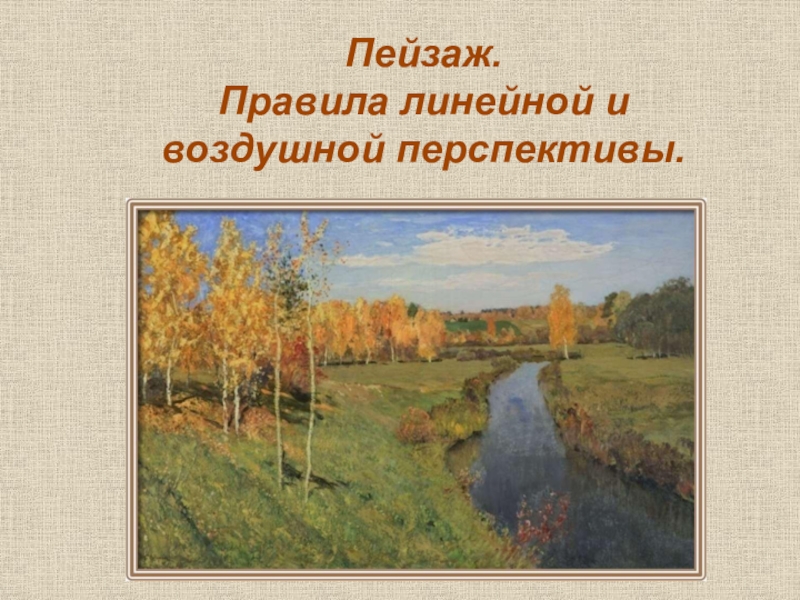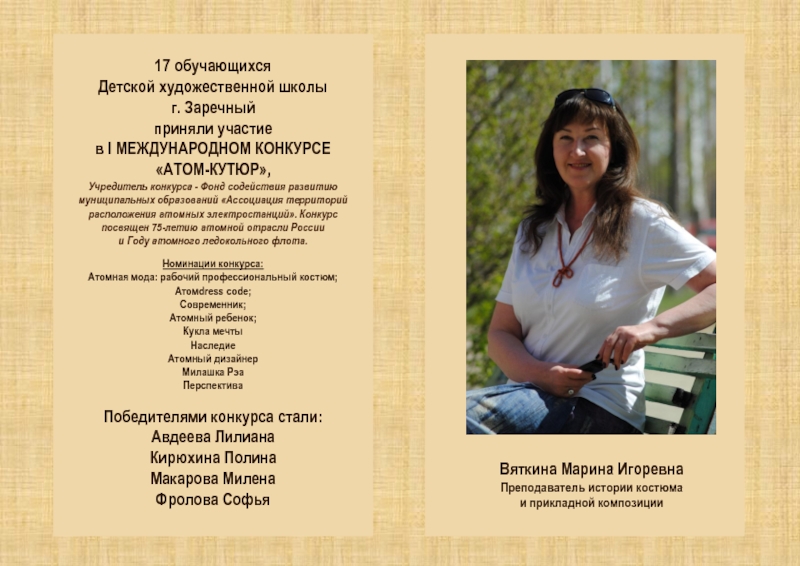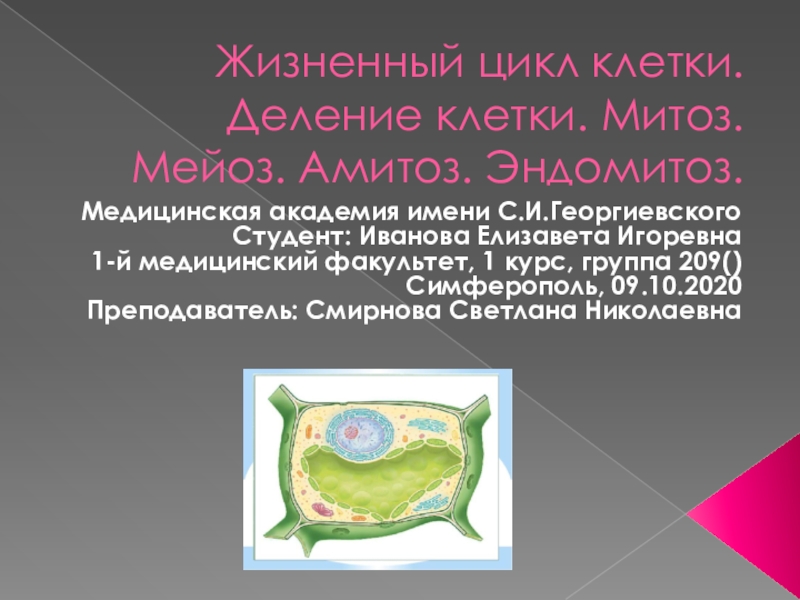Слайд 1
adaptive types of population
features of biological and social adaptation of
arctic indigenois peoples
MEDICAL ACADEMY NAMED AFTER S.I.GEOIEVSKY OF VERNADSKY CFU
COURSE
STUDENT
SANDIP KUMAR MONDAL
SCIETIFIC LEADER
SVETLANA SMIRNOVA
Слайд 2Adaptation
In biology, adaptation has three related meanings. Firstly, it is the dynamic evolutionary
process that fits organisms to their environment, enhancing their evolutionary fitness. Secondly, it
is a state reached by the population during that process. Thirdly, it is a phenotypic trait or adaptive trait, with a functional role in each individual organism, that is maintained and has evolved through natural selection.
Слайд 3Human adaptation
Humans have biological plasticity, or an ability to adapt biologically to our
environment. An adaptation is any variation that can increase one's biological fitness
in a specific environment; more simply it is the successful interaction of a population with its environment.
Слайд 4Heat cold adaptation of human
Physical adaptations in human beings are seen in response to
extreme cold, humid heat, desert conditions, and high altitudes. Cold adaptation is of three
types: adaptation to extreme cold, moderate cold, and night cold. Ordinarily the body rids itself of excess heat by sweating.
Слайд 6Adaptive type of population
Adaptive type – in evolutionary biology – is any population or taxon which have
the potential for a particular or total occupation of given
free of underutilized home habitats or position in the general economy of nature. In evolutionary sense, the emergence of new adaptive type is usually a result of adaptive radiation certain groups of organisms in which they arise categories that can effectively exploit temporary, or new conditions of the environment.
Слайд 8Such evolutive units with its distinctive – morphological and anatomical,
physiological and other characteristics, i.e. genetic and adjustments (feature) have
a predispositiona for an occupation certain home habitats or position in the general nature economy.
Simply, the adaptive type is one group organisms whose general biological properties represent a key to open the entrance to the observed adaptive zone in the observed natural ecological complex.
Adaptive types are spatially and temporally specific. Since the frames of general biological properties these types of substantially genetic are defined between, in effect the emergence of new adaptive types of the corresponding change in population genetic structure and eternal contradiction between the need for optimal adapted well the conditions of living environment, while maintaining genetic variation for survival in a possible new circumstances.
Слайд 11Adaptation in arctic indigenous people
Northern people found many different ways
to adapt to the harsh Arctic climate, developing warm dwellings and clothing to protect
them from frigid weather. They also learned how to predict the weather and navigate in boats and on sea ice.
The indigenous peoples of the North American Arctic include the Eskimo (Inuit and Yupik/Yupiit) and Aleut; their traditional languages are in the Eskimo-Aleut family. Many Alaskan groups prefer to be called Native Alaskans rather than Native Americans; Canada's Arctic peoples generally prefer the referent Inuit.
Слайд 12What do you need to survive in the Arctic?
Stay hydrated.
Consume
lots of calories and food high in fat.
Protect yourself from
the wind.
Insulate yourself from the cold.
Protect extremities.
Stay dry.
Don't get lost.
Avoid weak ice.
Слайд 13Ringed seal and bearded seal are the most important aspect
of an Inuit diet and is often the largest part
of an Inuit hunter's diet. Land mammals such as caribou, polar bear, and muskox. Birds and their eggs. Saltwater and freshwater fish including sculpin, Arctic cod, Arctic char, capelin and lake trout.
Слайд 15 Adaptation of inhabitants of tropic
Tropical people drink less water
because their food contains a lot of water. They know
how to use thousands of edible, medicinal, and poisonous plants and how to grow crops in the forest's poor soil. They also know how to hunt and fish without driving the animals to extinction.
The blood concentrations of water and salt adjust to allow greater cooling, the blood vessels alter to get more to the skin, and so on. Athletes use this process and train in harsher climates to cause more profound body adaptations.
Слайд 17 Adaptation in arid regions
A region is arid when it is characterized by a
severe lack of available water, to the extent of hindering
or preventing the growth and development of plant and animal life. Environments subject to arid climates tend to lack vegetation and are called xeric or desertic.
People have been living in the desert for thousands of years and have adapted to its extreme conditions. 2.5 million people live in the Sahara; this is including a couple of cities, such as Khartoum, which border the desert.
Слайд 18Their traditional lifestyle has adapted to these extremely arid conditions.
Their nomadic
lifestyle means they do not settle in one area for long.
Instead, they move on frequently to prevent exhausting an area of its resources.
They have herds of animals which are adapted to living in desert conditions, such as camels.
Their tents are built to allow air to circulate within them, keeping them cool. Animal hair is used to insulate them, to keep the tent cool during the day and warmer at night.
Слайд 19Modern adaptations to arid conditions
With both money and technology, desert
areas can be developed to cater for modern lifestyles. Las
Vegas, in the Mojave Desert, is one of the fastest-growing cities in the USA. The city of Las Vegas is lush and green in comparison with the surrounding desert.
This is possible because 90 per cent of the water Las Vegas needs is imported from the Colorado River. The remaining 10 per cent comes from ground water. The demand for water is not sustainable and the city has started to plan to reduce the demand for water. One way is that new homes have restrictions on the amount and type of lawns that they can have. The authority also recycles water where it can.
Слайд 20Videos on Related Topic
https://youtu.be/X9zXCajF4pA
https://youtu.be/hTfBSIYTG4k
https://youtu.be/1kJiL7AnOiU
